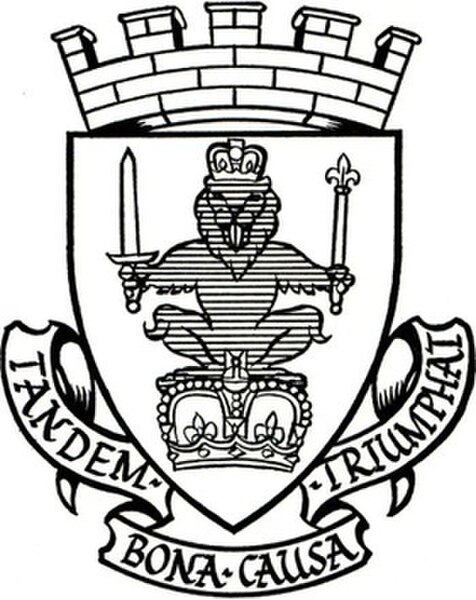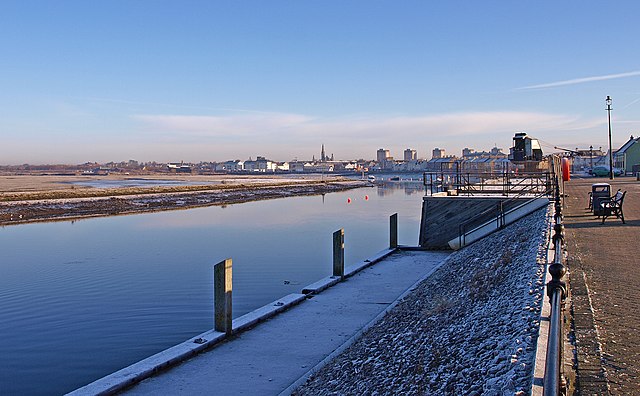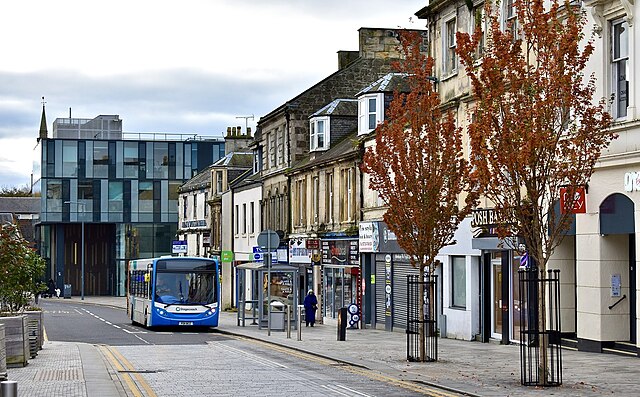Trindlemoss Loch, Scott's / Scot's Loch or the Loch of Irvine was situated in a low-lying area running from Ravenspark to near Stanecastle and down to Lockwards, now represented only by the playing fields off Bank Street in the Parish of Irvine, North Ayrshire, Scotland. The loch was natural, sitting in a hollow created by glaciation. The loch waters were progressively drained and in 1691 this was finally achieved.
Trindlemoss Loch site
Lochwards gateposts, Trindlemoss Loch outflow
The memorial to the Scottish Army Campsite at Knadgerhill; a battle that never happened
Williamfield Lodge
Irvine is a town and former royal burgh on the coast of the Firth of Clyde in North Ayrshire, Scotland. The 2011 Census recorded the town's population at 33,698 inhabitants, making it the largest settlement in North Ayrshire, and 22nd largest settlement in Scotland. Irvine was designated at the fifth and final Scottish new town in November 1966. Irvine is the administrative centre and the seat of the North Ayrshire Council administration which has its headquarters based at Cunninghame House. Irvine was the site of Scotland's 12th century military capital and former headquarters of the Lord High Constable of Scotland, Hugh de Morville. It also served as the capital of Cunninghame and was, at the time of David I, Robert II and Robert III, one of the earliest capitals of Scotland.
Coat of Arms of Irvine
Image: Irvine Harbour geograph.org.uk 2196502
Image: The Court House, Irvine High Street (geograph 6284425)
Image: NS3239 High Street, Irvine, North Ayrshire








